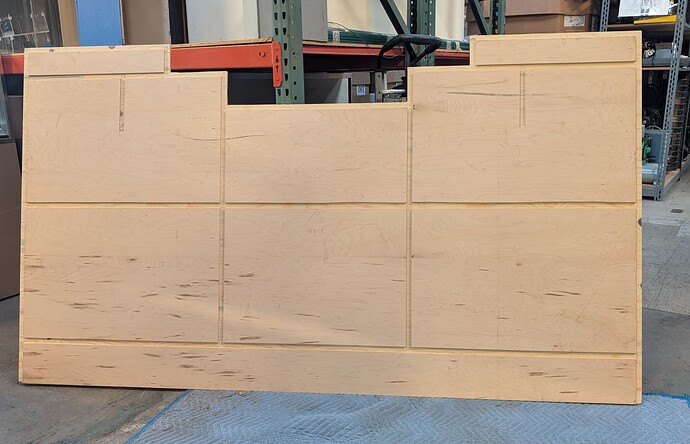Hi,
I have been following compass for a little while, finally decided to ask a question.
I have a shelving project that I want to build and am wondering whether compass could do the work. In an ideal world, I would build a lowrider with a bed big enough to handle a 4x8 foot sheet of plywood. My shop is very small and can’t fit a permanent table that size. That leads me to see if the compass could do the work instead.I also have a friend who builds things and this could be a total game changer for him, so I’m happy to see if this can help him as well.
The project uses the 32mm shelf holding pins. each end panel is just under 16" wide by 80" tall (sorry for using archaic measures.) With 6 end panels, 4 holes per level and 32mm between panels, this is on the order of 1500 holes to drill, along wit some dado and rabbets for assembly. There is no way I have the patience to do that drilling accurately and consistently, so CNC is the way to go.
I could get someone else to do the work, but I am a tool junkie, and this would open up so many other projects that I could do and get me to learn a bunch of things that I wanted to do anyway.
First, is the move and drill pattern appropriate for the compass? Second, how accurate is the tracking over 300 inches of tool travel? (I could break that up into sections to reduce the path length.)
Is there any way to automatically find the edges of the panel and set XY zero from that? (I would be OK with fitting a touch sensor in the router collet for this. I think there are a number of ways that various touch sensors and matching software could be really useful to compass as a general thing)
thanks in advance,
jerry
